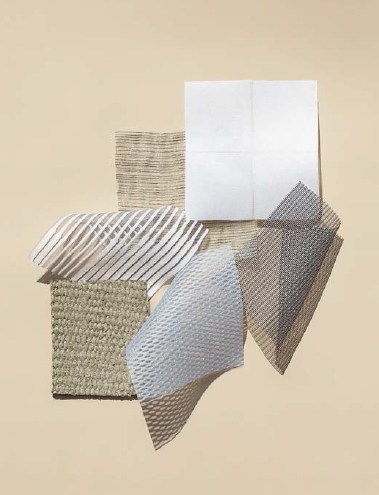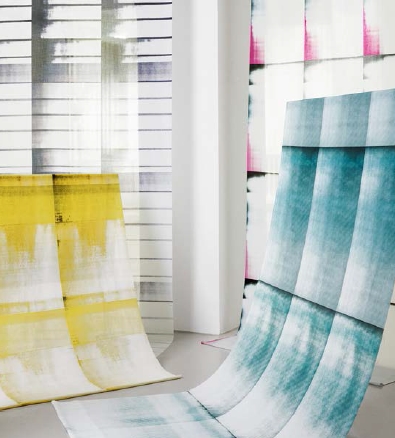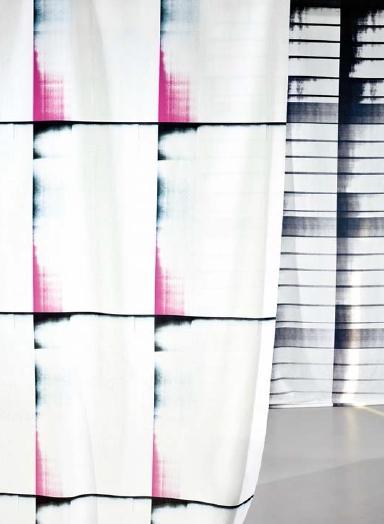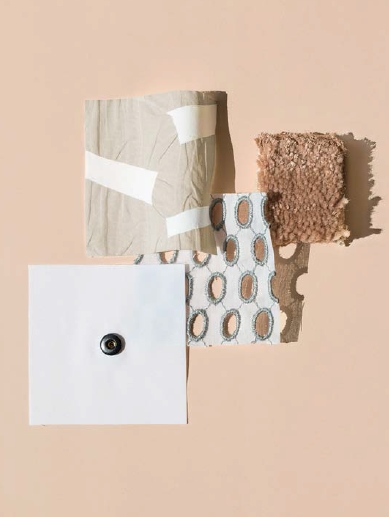Characterised by state-of-the-art weaving technology, refined materials and multidimensional colours, Tailor Made explores the concept of fine-tailoring applied to interiors. In doing so, the collection translates the particular sensation of well-being that comes from wearing tailored garments into spaces.
Reflecting this, the curtains and rugs comprising the collection are ‘worn’ by interiors. Surprising and intricate, they consistently unveil fresh haptic and visual traits, as well as providing illuminating insights into the essence of the environments they inhabit.
Like tailored attire, the textiles in the collection act as a medium for self- expression. For instance, with the curtain Clique, press buttons in metallic hues are transformed into tools for sculpting shape and drape, according to individual taste.
Intriguing new interpretations of classic motifs associated with tailoring are a defining feature of Tailor Made. The collection forms a meticulous language from archetypal patterns in weaves and materials, such as herringbone, polka dot, argyle and pinstripe, as well as bouclé, cord and tweed.
In addition, Tailor Made offers a scale of sensuous structures and surfaces, which reference fine-tailoring. Ranging from transparent and airy to natural and dense, these engage in a lively dialogue with vivid effect yarns and special finishes.
Further building on the concept of tailor made, all the curtains in the collection gain a strong sculptural aspect when draped. They play with perception and highlight materiality: pattern fuses with structure; form is shaped by surface; colours unite into shades.
The colour concept for Tailor Made infuses the collection with exceptional versatility as it draws on mixed tones and refined palettes to unfold subtle gradations and fresh notes.
This evocative, nuanced approach to colour ensures the Tailor Made rugs and curtains can be combined in many ways while seamlessly adapting to typical architectural surfaces and materials. Notably wood, stone and metal.
To accompany the Tailor Made collection, Kinnasand is introducing re-editions of bestselling rugs that bring contemporary perspectives to artisanal hand knotting and hand weaving techniques. Hemp, Vintage, Kanon and Cascade, come in new understated yet confident colours, which naturally harmonise with high-end interiors.
Scrap_CMYK by Rikako Nagashima for Kinnasand Lab
Scrap_CMYK is a curtain collection created by the Japanese graphic designer Rikako Nagashima for Kinnasand Lab. It comprises four designs and the plain base fabric made out of 100% recycled polyester.
With Scrap_CMYK, Rikako Nagashima takes inspiration from, and gives new life to, ‘waste’ test-print paper sheets and their accidental patterns. These are produced during the off-set printing process
when fine tuning colours.
The collection unites the aesthetic, graphic expressions of the paper sheets into a digitally printed series of curtains, which are characterised by surprising designs and intriguing rhythms.
The marks left by the printing machines vary in intensity, depth and precision: some are virtually invisible or bleed organically; others are more clearly defined blocks and stripes. Curiously, this imbues the designs with an almost painted expression, as well as a particular dimensionality and depth.
The woven ground material for the curtains is made of specially developed 100% recycled polyester, which is produced from used plastic bottles. This has a crepe-like character reminiscent of matt, sandy paper and chimes with Rikako Nagashima’s concept of transforming end-of-life into new life.
The colour concept for Scrap_CMYK precisely matches the inks used in the off-set printing process: Cyan, Magenta, Yellow and Key (black). Each of the designs is solely linked to one of these specific colour settings.
Rikako Nagashima: “I often consider how I can use the concept of upcycling in my work, giving something that was once considered waste, new value. For this collaboration with Kinnasand, I took scrap papers from various projects at my graphic design practice and highlighted the ink stains and print errors as a serendipitous design pattern.”


